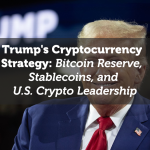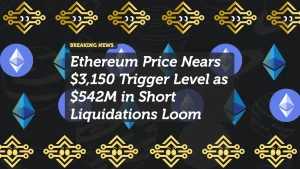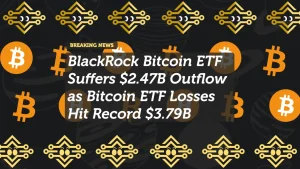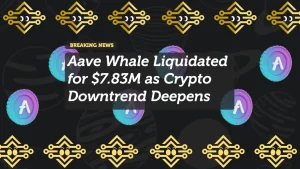
Trump Goes Nuclear on Zelensky After “Russian Agent” Accusation
The ongoing rift between former U.S. President Donald Trump and Ukrainian President Volodymyr Zelensky has reached new heights. After Zelensky suggested that Trump was amplifying Russian disinformation, Trump fired back with his most aggressive rhetoric yet. His February 19, 2025, Truth Social post, labeling Zelensky a “dictator without elections,” has triggered a geopolitical storm, further dividing global opinion on the U.S. stance toward Ukraine.
This blog explores the origins of their dispute, the latest developments, and the broader implications for U.S.-Ukraine-Russia relations.
The Spark: Zelensky’s “Disinformation” Comment
On February 19, 2025, Zelensky, speaking at a Kyiv press conference, dismissed Trump’s claims that Ukraine had instigated the war. Trump had also alleged that Zelensky’s approval rating had plummeted to 4%, which the Ukrainian leader refuted using a Kyiv International Institute of Sociology poll indicating a 57% approval rating.
Zelensky stated that Trump was “living in a disinformation space” and indirectly implied that Trump was echoing Russian propaganda. This set the stage for Trump’s fiery response.
Trump’s “Nuclear” Response
Hours after Zelensky’s remarks, Trump took to Truth Social with an aggressive rebuttal.
Key points from Trump’s post:
- Called Zelensky a “dictator without elections.”
- Accused Ukraine of manipulating the U.S. into spending $350 billion on a war it could not win. (In reality, Congress has approved about $175 billion since 2022.)
- Claimed that half of the aid was “missing,” though no credible sources support this.
- Warned that Ukraine “won’t have a country left” if Zelensky fails to act quickly.
Trump’s rhetoric not only mirrors Kremlin narratives but also suggests a radical shift in U.S. foreign policy.
Immediate Reactions & Global Response
1. Russian Endorsement
Within hours of Trump’s post, Russian state media and officials expressed support:
- Dmitry Medvedev, former Russian president and close Putin ally, posted on X, “Trump is 200% right. Bankrupt clown…”
- Russian TV networks Rossiya and Komsomolskaya Pravda celebrated Trump’s statements, reinforcing the Kremlin’s position.
2. Ukraine Pushes Back
Ukrainian officials quickly countered Trump’s claims:
- Foreign Minister Andrii Sybiha posted on X, “No one can force Ukraine to give up. We will defend our right to exist.”
- Zelensky, in his late-night address, emphasized that Ukraine would only accept peace negotiations involving all relevant stakeholders, rejecting Trump’s U.S.-Russia talks in Saudi Arabia.
3. European Alarm
European leaders were quick to express concern over Trump’s remarks:
- German Chancellor Olaf Scholz called Trump’s comments “false and dangerous.”
- UK Prime Minister Keir Starmer and Swedish PM Ulf Kristersson reaffirmed their support for Ukraine.
- The European Union announced its 16th sanctions package against Russia, further tightening economic pressure.
| Recent Developments | Implications |
|---|---|
| Trump’s pivot to Russia-friendly diplomacy | Weakens U.S. support for Ukraine |
| Saudi peace talks (Feb 18, 2025) | Excludes Ukraine, sparking backlash |
| Zelensky’s declining approval narrative | Seen as Kremlin propaganda |
| EU’s new sanctions on Russia | Strains Europe-Russia relations further |
The Bigger Picture: What’s at Stake?
1. U.S. Policy Shift Under Trump
Trump’s remarks indicate a break from Biden’s pro-Ukraine stance. The February 18 U.S.-Russia peace talks in Saudi Arabia—excluding Ukraine—highlight a new direction in American diplomacy. Secretary of State Marco Rubio’s meeting with Russian Foreign Minister Sergey Lavrov signals Trump’s willingness to negotiate directly with Moscow.
2. Zelensky’s Legitimacy Questioned
Trump’s “dictator without elections” remark echoes Putin’s assertions that Zelensky is no longer a legitimate leader. Although Zelensky’s term officially expired in May 2024, martial law—implemented due to the Russian invasion—has postponed elections, a move in line with Ukraine’s constitution. Trump’s mischaracterization fuels Kremlin narratives that Ukraine lacks democratic leadership.
3. The Future of Western Support for Ukraine
With Trump’s shifting stance, Ukraine may face dwindling U.S. financial and military support. However, European allies are stepping up, evidenced by:
- France’s emergency meeting in Paris (Feb 19, 2025) on strengthening Ukrainian aid.
- Germany and the UK reaffirming military commitments.
- The EU’s latest sanctions package targeting Russian oil and banking sectors.
Final Thoughts
Trump’s “nuclear” outburst against Zelensky is more than just an online feud; it’s a seismic shift in U.S. foreign policy. While Trump positions himself as a dealmaker capable of ending the war, his approach raises serious questions:
- Will Ukraine be pressured into territorial concessions?
- Can Europe counterbalance Trump’s retreat from pro-Ukraine policies?
- Does this signal a long-term U.S. realignment with Russia?
With negotiations unfolding and tensions rising, the world is watching closely. What happens next will shape not only the future of Ukraine but also the broader geopolitical landscape.
















